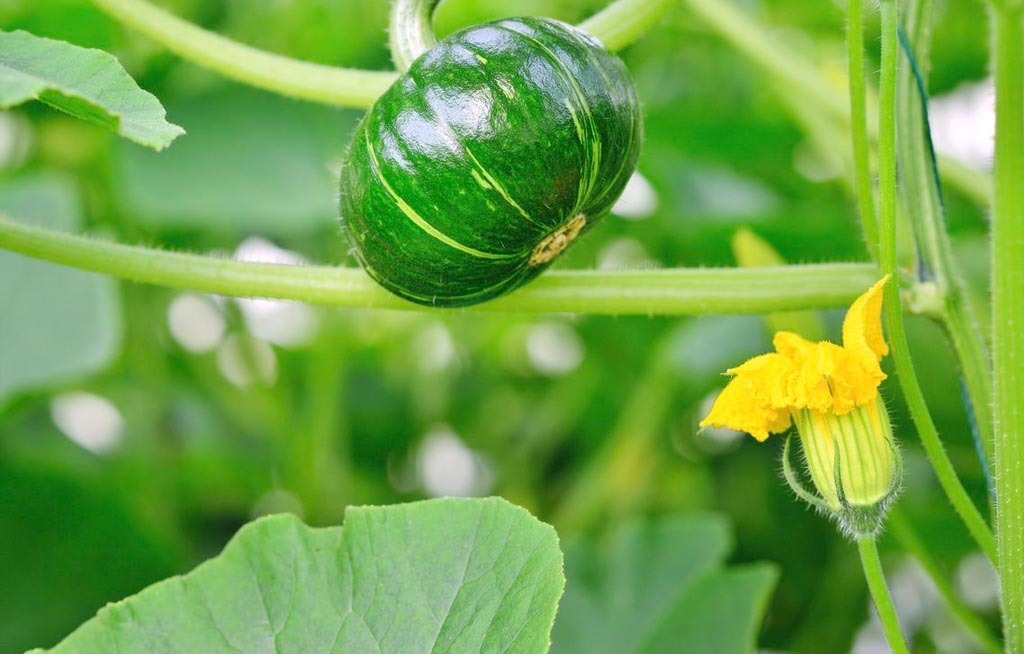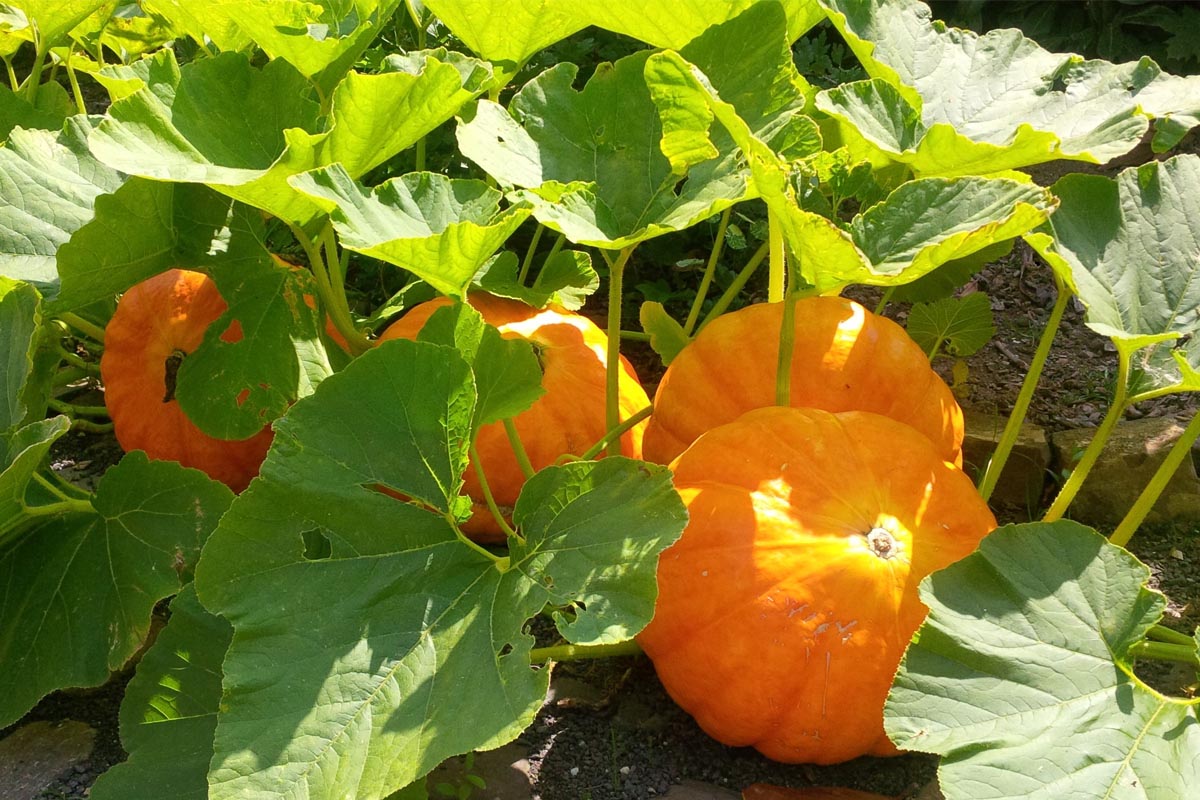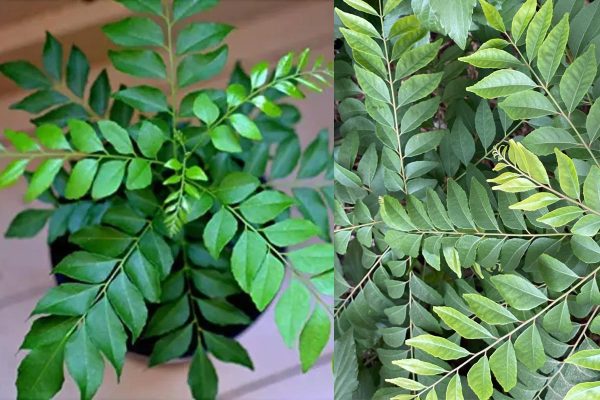Plants
Pumpkin
Introduction / परिचय
Pumpkin plants (Cucurbita pepo) are squash grown for their large, round fruits. They belong to the Cucurbitaceae family, which also includes other types of squash, such as zucchini and butternut squash. Pumpkin plants are typically grown in warm climates and require plenty of sunlight and water to thrive. They are often used for making pumpkin pies, soups, and other dishes, and their seeds are also a popular snack. Pumpkin plants can be started from seeds, and they typically take about 90-120 days to mature, depending on the variety.
Also Read This : Navratri Flowers: Symbolism and Importance
| English Name: | Pumpkin |
| Hindi Name: | कद्दू (Kaddoo) |
| Scientific Name: | Cucurbita pepo |
| Family: | Cucurbitaceae |
| Kingdom: | Plantae |
| Light : | Full Sun |
| Height: | - |
| Flower Color : | Yellow |
| Leaves Color : | Green |
| Eason Features : |
Also Read This : Greening Your Home: The Benefits of Indoor Plants
When to Plant Pumpkin
Timing is crucial when planting pumpkin (Cucurbita pepo) seeds, as it directly influences the growth and success of these vibrant vines. Whether envisioning a festive display of pumpkins or planning to enjoy their delicious flavours, understanding the optimal planting window is essential. In this guide, we'll delve into the best times to sow pumpkin seeds, ensuring you reap the rewards of your efforts with a plentiful harvest. Let's explore the art of perfect timing in pumpkin cultivation.
Understanding Pumpkin Growth
Before diving into planting schedules, it's essential to grasp the growth characteristics of pumpkins. They are warm-season crops that thrive in full sun, requiring a longer growing season to produce their iconic fruit. Pumpkins belong to the more prominent squash family, known for their sprawling vines and large, colourful fruits.
Best Planting Time for Pumpkins
The ideal time to plant pumpkin seeds depends on your climate, the pumpkin variety, and your local frost dates. Here's a general guideline to help you determine the proper planting window:
Spring Planting
In regions with a distinct growing season, wait until after the danger of frost has passed and the soil has warmed up. Planting pumpkin seeds directly in the garden or raised beds in late spring to early summer is recommended.
Warm Climate Planting
In warmer climates with longer growing seasons, pumpkin seeds can be planted earlier, even as early as winter or spring. This allows the vines ample time to mature and produce fruit before the arrival of hot summer temperatures.

Also Read This : Easy way to grow Strawberry at Home
Varieties / किस्मे
Pumpkins (Cucurbita pepo) are synonymous with autumn, adorning doorsteps, kitchens, and festivals with their vibrant colours and diverse forms. Beyond the classic orange gourd lies a world of pumpkin varieties with unique characteristics, flavours, and uses. Let's explore the captivating array of pumpkin varieties, from petite gems to colossal giants, and explore their creative possibilities.
Jack-O'-Lantern Pumpkins
The quintessential Halloween pumpkin, these medium-sized varieties are perfect for carving spooky or whimsical designs. They have a relatively smooth surface and are known for their bright orange hue.
Sugar Pumpkins (Pie Pumpkins)
Ideal for baking, these small pumpkins have a sweeter, less watery flesh than more extensive varieties. Their rich flavour and smooth texture make them perfect for making pumpkin puree, soups, and pies.
Miniature Pumpkins
These tiny pumpkins, also known as decorative or ornamental pumpkins, come in various shapes and colours. They're famous for table centrepieces, fall décor, and crafting projects.
White Pumpkins
They stand out with their unique ivory or pale green skin. They offer a fresh twist on traditional fall décor and can be used for decorative and culinary purposes.
Cinderella Pumpkins
Named after the fairytale carriage, these pumpkins have a flattened, profoundly ribbed shape and a reddish-orange colour. They're favoured for their appearance in fall displays.
Long Island Cheese Pumpkins
Resembling a wheel of cheese, these pumpkins have a flattened shape with a tan-coloured rind. They're known for their smooth, sweet flesh, making them excellent for pies and dishes.
Jarrahdale Pumpkins
Originating from Australia, Jarrahdale pumpkins are recognized for their blue-grey skin and squat shape. Their vibrant orange flesh is well-suited for roasting and pureeing.
Atlantic Giant Pumpkins
These colossal pumpkins are grown for size competitions and exhibitions. They can reach hundreds of pounds, requiring specialized care and attention to achieve their impressive dimensions.
Fairytale Pumpkins
With a striking squat shape and deep ribbing, fairytale pumpkins offer a visually intriguing addition to fall displays. They're favoured for their appearance in both culinary and ornamental settings.
Rouge Vif d'Etampes Pumpkins
Also known as the "Cinderella pumpkin," this French heirloom variety boasts a vibrant reddish-orange hue and distinctive lobed shape. It's prized for its striking appearance in decorative arrangements.
From classic carving pumpkins to delectable pie pumpkins and an array of visually stunning varieties, the world of pumpkins is a treasure trove of diversity. Whether you're seeking the perfect canvas for your jack-o'-lantern creation or aiming to craft delectable autumn recipes, there's a pumpkin variety waiting to be embraced, celebrated, and cherished.
Also Read This : 12 Delicious and Nutritious Herbal Teas to Boost Your Health
Classification of Plants/ पौधों का वर्गीकरण
Pumpkin plants (Cucurbita pepo) encompass a variety of types, each with distinct characteristics. Here's a concise classification:
Jack-O'-Lantern Pumpkins
- Medium-sized, ideal for carving
- Bright orange skin, smooth surface
Sugar Pumpkins (Pie Pumpkins)
- Small with sweet, less watery flesh
- Perfect for baking and making puree
Miniature Pumpkins
- Tiny, decorative, and ornamental
- Used for fall decor and crafting
White Pumpkins
- Ivory or pale green skin
- Offers a fresh twist for fall displays
Cinderella Pumpkins
- Flattened, ribbed shape, reddish-orange colour
- Used decoratively in fall displays
Long Island Cheese Pumpkins
- Flattened with tan rind
- Smooth, sweet flesh for pies
Jarrahdale Pumpkins
- Blue-grey skin, squat shape
- Orange flesh for roasting and pureeing
Atlantic Giant Pumpkins
- Colossal size for competitions
- Requires specialized care
Fairytale Pumpkins
- Squat shape with deep ribbing
- Used for both culinary and ornamental purposes
Rouge Vif d'Etampes Pumpkins
- Vibrant reddish-orange hue, lobed shape
- French heirloom variety for decoration and use
Also Read This : 10 Summer Solutions: How to Safeguard Your Balcony Garden from Heat Stress and More
History / इतिहास
Pumpkins are believed to have originated in Central America over 7,500 years ago. Indigenous peoples first cultivated them for their nutritious seeds and flesh. The early pumpkin varieties were smaller and rounder than modern pumpkins, but they were still an important food source.
European explorers brought pumpkins back to Europe when they arrived in the Americas. The new world crop quickly gained popularity, and by the 1700s, pumpkins were being grown extensively in England and other parts of Europe.
In the United States, pumpkins became a symbol of the fall harvest season and were used in Thanksgiving celebrations. The tradition of carving pumpkins for Halloween also emerged in the US, with the first recorded instance of a carved pumpkin in North America dating back to the early 1800s.
Today, pumpkins are grown all over the world. They are used for various purposes, including food, decoration, and even as a source of biofuel. They remain an essential part of many cultures and traditions around the world.

Also Read This : Discover the Secrets to Growing Beautiful Cardamom Plants!
Uses and Benefits / उपयोग एवं फायदे
Pumpkin plants (Cucurbita pepo) are nature's gift that keeps on giving, offering a diverse array of uses and a wealth of healthful benefits. From their hearty fruit to their nutritious seeds, pumpkin plants hold a special place in culinary traditions and wellness practices.
Culinary Delights
Nutrient-Rich Flesh
The orange flesh of pumpkins is a nutritional powerhouse, rich in vitamins A and C, fibre, and antioxidants. It serves as a base for soups, stews, curries, and delightful pies.
Sweet Sensations
Pumpkin's natural sweetness makes it a star ingredient in sweet dishes like pies, muffins, and pancakes. Its smooth texture creates a luscious mouthfeel in desserts.
Roasted Goodness
Roasted pumpkin slices or chunks offer a savoury side dish or a versatile ingredient for salads and grain bowls, adding depth to various meals.
Healthful Benefits
Eye Health
Pumpkins' vibrant orange colour comes from beta-carotene, which supports healthy vision and may reduce the risk of age-related macular degeneration.
Heart Health
The fibre and potassium content in pumpkins contribute to heart health by helping regulate blood pressure and supporting cardiovascular function.
Weight Management
Pumpkins are low in calories and fibre, making them a satiating addition to meals. Their natural sweetness can satisfy cravings for less nutritious treats.
Digestive Support
Pumpkin's fibre aids digestion by promoting regular bowel movements and supporting a healthy gut microbiome.
Seeds of Goodness
Nutrient-Packed Seeds
Pumpkin seeds, or pepitas, are rich in protein, healthy fats, magnesium, and zinc. They make for a crunchy and nutritious snack or a versatile ingredient.
Plant-Based Protein
Pumpkin seeds are a great source of plant-based protein, making them an excellent addition to vegetarian and vegan diets.
Natural Beauty and Wellness
Skincare
Pumpkin enzymes and antioxidants are used in skin care products for exfoliation and promoting a healthy complexion.
Haircare
Pumpkin seed oil is known for its potential benefits in promoting hair growth and maintaining a healthy scalp.
Festive Decor and Craft
Decorative Gourds
Pumpkins' ornamental qualities add charm to seasonal displays, both indoors and outdoors, celebrating the spirit of fall.
Carving Tradition
The art of carving jack-o'-lanterns during Halloween has become a beloved cultural tradition, showcasing creativity and festive spirit.
From its delectable flesh and seeds to its nutritional benefits and beyond, pumpkin plants have earned their place as a cherished resource. Whether gracing our tables, enhancing our well-being, or adorning our homes, the uses and benefits of pumpkin plants extend far beyond their initial harvest, enriching our lives with their boundless versatility and natural goodness.
Also Read This : Rubber Plants: A Beginner’s Guide to Growing and Maintaining Them
How to Grow Care Pumpkin Plant / कैसे उगाएं
Growing pumpkin plants (Cucurbita pepo) is a rewarding journey that culminates in the vibrant beauty of their iconic fruits. Whether aiming for culinary delights, decorative displays, or both, cultivating healthy pumpkin plants requires attention, care, and a touch of green-thumb magic. Here's a step-by-step guide to help you embark on your pumpkin-growing adventure and ensure a bountiful harvest.
Choosing the Right Variety
Select a pumpkin variety that suits your goals. Consider factors like size, colour, flavour, and intended use (culinary or ornamental).
Selecting a Growing Area
Pumpkins thrive in full sun. Choose a well-draining location with ample sunlight and adequate space for the sprawling vines.
Soil Preparation
Prepare the soil by loosening it to a depth of about 12 inches. Amend with compost or well-rotted manure to enhance fertility and drainage.
Planting Seeds
Plant pumpkin seeds directly in the garden after the last frost date. Plant multiple seeds (2-4) about 1 inch deep in each spot, leaving a few feet of space between hills.
Providing Support
For larger varieties, consider using trellises or supports to keep the vines off the ground, preventing rot and maximizing space.
Watering
Keep the soil consistently moist, particularly during the early stages of growth and when flowering begins. Water at the base of the plants to avoid wetting the leaves.
Fertilization
Apply a balanced fertilizer or compost at planting time. You can also provide additional fertilization as the vines start to grow.
Thinning Seedlings
Once seedlings have sprouted and established their first true leaves, thin them to one or two vigorous seedlings per hill.
Pollination
Pumpkins require pollination for fruit development. Encourage pollinators by planting flowers nearby. Using a small brush, you can also hand-pollinate by transferring pollen from male to female flowers.
Pest and Disease Management
Monitor for pests like squash bugs and cucumber beetles. Apply natural remedies or insecticidal soap as needed. Look for signs of disease, such as powdery mildew, and address promptly.
Harvesting
Harvest pumpkins when they've reached their mature colour, have problematic skin, and the vine has started to die back. Leave a few inches of stem attached to the pumpkin.
Saving Seeds
If desired, save seeds from mature pumpkins for planting in the next season. Allow the roots to dry thoroughly before storing.Also Read This : Revitalize Your Mind and Body with the Power of Brahmi
Interesting Facts / रोचक तथ्य
- Pumpkins are a type of squash and are related to cucumbers and melons.
- The giant pumpkin ever grown weighed over 2,600 pounds and was raised in Belgium in 2016.
- Pumpkins are 90% water, so they are a low-calorie food.
- The name "pumpkin" comes from the Greek word "pepon," which means "large melon."
- Pumpkins were once believed to cure snake bites and remove freckles.
- The tradition of carving pumpkins for Halloween originated in Ireland, where people used to cut turnips and potatoes instead.
- Pumpkin seeds are a good source of protein, healthy fats, and minerals like zinc and magnesium.
- Pumpkins can be used to make various dishes, including pumpkin pie, pumpkin soup, and roasted pumpkin seeds.
- The world record for the most pumpkins carved in one hour is 109, set by Stephen Clarke of the UK in 2015.
- Pumpkins are not just for eating and decoration - they can also be used to make biofuel!
Also Read This : How To Grow Gazania Flower at Home




